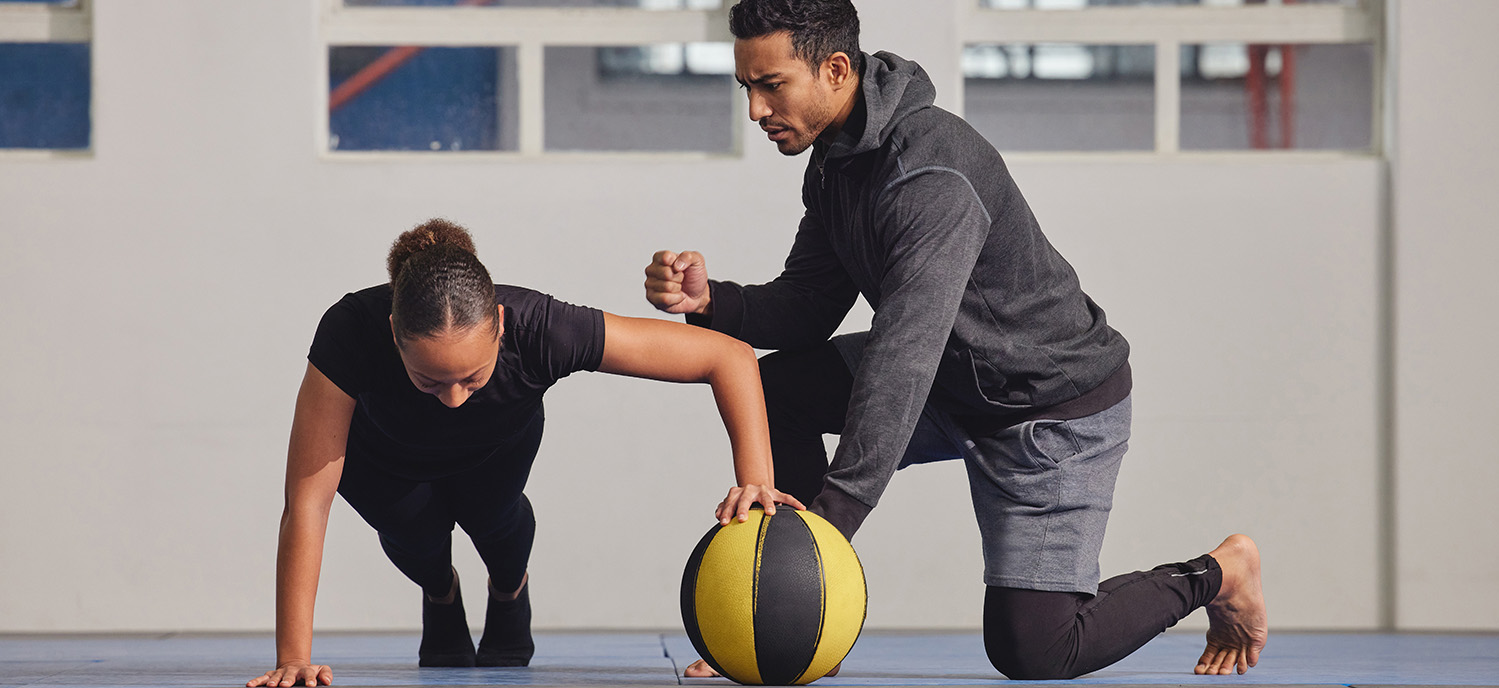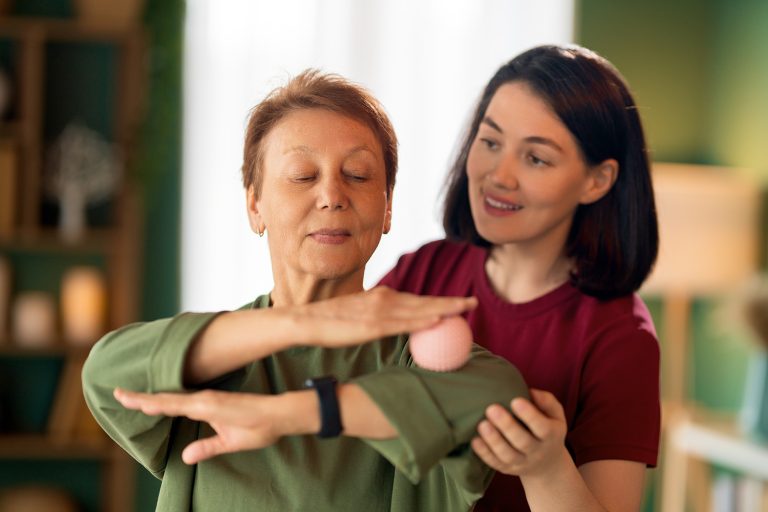

Strength and Conditioning
Building a Strong Foundation for Athletic Excellence
At Kinetic Physical Therapy and Wellness in Greenville, NC, we are dedicated to helping athletes achieve their peak potential through specialized, one-on-one therapy in a professional, yet colorful and vibrant atmosphere. One of the key pillars of our approach is strength and conditioning, which is essential for building a strong foundation for athletic excellence. In this blog post, we will highlight the key components of strength and conditioning programs and their impact on overall athletic performance and injury prevention.
The Importance of Strength and Conditioning
Strength and conditioning programs are designed to enhance an athlete’s physical capabilities, improve performance, and reduce the risk of injury. These programs encompass a wide range of exercises and techniques that target different aspects of physical fitness, including muscular strength, power, endurance, flexibility, and stability. Here’s why strength and conditioning are vital for athletes:
Improved Performance
Strength and conditioning training helps athletes develop the physical attributes necessary for their sport, such as speed, power, agility, and endurance. By improving these attributes, athletes can perform at a higher level and gain a competitive edge.
Injury Prevention
A well-rounded strength and conditioning program strengthens muscles, tendons, ligaments, and joints, making them more resilient to stress and reducing the likelihood of injuries. Proper training also improves biomechanics and movement patterns, further minimizing injury risks.
Enhanced Recovery
Strength and conditioning programs not only improve performance but also enhance the body’s ability to recover from intense training and competition. Better recovery means athletes can train harder and more frequently without overtraining or burnout.
Mental Toughness
The discipline and consistency required in strength and conditioning training build mental toughness and resilience. Athletes learn to push through challenges, stay focused, and maintain motivation, all of which are crucial for success in sports.
Key Components of Strength and Conditioning Programs
A comprehensive strength and conditioning program includes several key components that work together to build a strong, well-rounded athlete. These components are tailored to the specific needs and goals of each athlete, ensuring optimal results.
Strength Training
Strength training focuses on increasing muscle mass and improving muscular strength. Exercises such as squats, deadlifts, bench presses, and rows are fundamental in building strength. These exercises can be performed using free weights, resistance bands, or body weight. Strength training not only enhances muscle power but also supports joint stability and overall body mechanics.
Power Training
Power training aims to develop explosive strength, which is essential for sports that require quick, forceful movements. Plyometric exercises, such as box jumps, medicine ball throws, and power cleans, are commonly used to improve power. These exercises help athletes generate more force in less time, enhancing their performance in activities like sprinting, jumping, and throwing.
Endurance Training
Endurance training focuses on improving cardiovascular fitness and muscular endurance. This type of training is vital for athletes who need to sustain high levels of performance over extended periods. Endurance training can include aerobic exercises, such as running, cycling, and swimming, as well as high-intensity interval training (HIIT), which combines short bursts of intense activity with periods of rest or low-intensity exercise.
Flexibility and Mobility
Flexibility and mobility are crucial for maintaining a full range of motion in joints and preventing injuries. Stretching exercises, yoga, and dynamic warm-ups help improve flexibility and mobility. These activities also promote better posture, balance, and coordination, which are essential for efficient movement and injury prevention.
Core Stability
Core stability exercises target the muscles of the abdomen, lower back, and pelvis, which are vital for maintaining proper posture and balance. A strong core enhances overall strength and stability, reducing the risk of injuries and improving performance in almost every sport. Exercises like planks, Russian twists, and leg raises are effective for building core stability.
Sports-Specific Training
Sports-specific training involves exercises and drills that mimic the movements and demands of an athlete’s particular sport. This type of training ensures that the physical improvements gained in the gym translate directly to on-field performance. For example, a soccer player might focus on agility drills, while a swimmer might include resistance training in water.
Impact on Athletic Performance
Strength and conditioning programs have a profound impact on athletic performance. Here are some of the key benefits:
Increased Strength and Power
Athletes with greater strength and power can perform more effectively and efficiently. Whether it’s lifting heavier weights, running faster, or jumping higher, increased strength and power translate to better performance in virtually all sports.
Enhanced Speed and Agility
Speed and agility are critical for many sports. Strength and conditioning programs improve an athlete’s ability to accelerate, decelerate, and change direction quickly, giving them a significant advantage in competitive situations.
Better Endurance
Improved cardiovascular fitness and muscular endurance allow athletes to sustain high levels of performance for longer periods. This is particularly important in sports that require prolonged exertion, such as long-distance running, cycling, and team sports like soccer and basketball.
Reduced Injury Risk
By strengthening muscles, tendons, ligaments, and joints, strength and conditioning programs make athletes more resilient to the physical demands of their sport. Proper training also improves movement patterns and biomechanics, reducing the likelihood of injuries caused by poor technique or overuse.
Faster Recovery
Enhanced recovery means athletes can train harder and more frequently without risking overtraining or burnout. Improved recovery also allows athletes to return to training or competition sooner after an injury or intense workout.
Strength and conditioning are integral components of athletic training that provide a strong foundation for athletic excellence. At Kinetic Physical Therapy and Wellness, we are committed to helping athletes reach their full potential through personalized, one-on-one therapy that focuses on building strength, power, endurance, flexibility, and stability. Our comprehensive strength and conditioning programs are designed to enhance performance, prevent injuries, and support overall health and well-being.
Whether you’re an aspiring athlete or a seasoned professional, investing in a well-rounded strength and conditioning program can make all the difference in your athletic journey. By incorporating the key components outlined in this blog post, you can build a strong foundation for success and achieve your peak performance. If you’re ready to take your athletic performance to the next level, contact Kinetic Physical Therapy and Wellness today to learn more about our customized strength and conditioning programs.
Please Share
categories
Recent Posts

Strength and Conditioning
Building a Strong Foundation for Athletic Excellence
At Kinetic Physical Therapy and Wellness in Greenville, NC, we are dedicated to helping athletes achieve their peak potential through specialized, one-on-one therapy in a professional, yet colorful and vibrant atmosphere. One of the key pillars of our approach is strength and conditioning, which is essential for building a strong foundation for athletic excellence. In this blog post, we will highlight the key components of strength and conditioning programs and their impact on overall athletic performance and injury prevention.
The Importance of Strength and Conditioning
Strength and conditioning programs are designed to enhance an athlete’s physical capabilities, improve performance, and reduce the risk of injury. These programs encompass a wide range of exercises and techniques that target different aspects of physical fitness, including muscular strength, power, endurance, flexibility, and stability. Here’s why strength and conditioning are vital for athletes:
Improved Performance
Strength and conditioning training helps athletes develop the physical attributes necessary for their sport, such as speed, power, agility, and endurance. By improving these attributes, athletes can perform at a higher level and gain a competitive edge.
Injury Prevention
A well-rounded strength and conditioning program strengthens muscles, tendons, ligaments, and joints, making them more resilient to stress and reducing the likelihood of injuries. Proper training also improves biomechanics and movement patterns, further minimizing injury risks.
Enhanced Recovery
Strength and conditioning programs not only improve performance but also enhance the body’s ability to recover from intense training and competition. Better recovery means athletes can train harder and more frequently without overtraining or burnout.
Mental Toughness
The discipline and consistency required in strength and conditioning training build mental toughness and resilience. Athletes learn to push through challenges, stay focused, and maintain motivation, all of which are crucial for success in sports.
Key Components of Strength and Conditioning Programs
A comprehensive strength and conditioning program includes several key components that work together to build a strong, well-rounded athlete. These components are tailored to the specific needs and goals of each athlete, ensuring optimal results.
Strength Training
Strength training focuses on increasing muscle mass and improving muscular strength. Exercises such as squats, deadlifts, bench presses, and rows are fundamental in building strength. These exercises can be performed using free weights, resistance bands, or body weight. Strength training not only enhances muscle power but also supports joint stability and overall body mechanics.
Power Training
Power training aims to develop explosive strength, which is essential for sports that require quick, forceful movements. Plyometric exercises, such as box jumps, medicine ball throws, and power cleans, are commonly used to improve power. These exercises help athletes generate more force in less time, enhancing their performance in activities like sprinting, jumping, and throwing.
Endurance Training
Endurance training focuses on improving cardiovascular fitness and muscular endurance. This type of training is vital for athletes who need to sustain high levels of performance over extended periods. Endurance training can include aerobic exercises, such as running, cycling, and swimming, as well as high-intensity interval training (HIIT), which combines short bursts of intense activity with periods of rest or low-intensity exercise.
Flexibility and Mobility
Flexibility and mobility are crucial for maintaining a full range of motion in joints and preventing injuries. Stretching exercises, yoga, and dynamic warm-ups help improve flexibility and mobility. These activities also promote better posture, balance, and coordination, which are essential for efficient movement and injury prevention.
Core Stability
Core stability exercises target the muscles of the abdomen, lower back, and pelvis, which are vital for maintaining proper posture and balance. A strong core enhances overall strength and stability, reducing the risk of injuries and improving performance in almost every sport. Exercises like planks, Russian twists, and leg raises are effective for building core stability.
Sports-Specific Training
Sports-specific training involves exercises and drills that mimic the movements and demands of an athlete’s particular sport. This type of training ensures that the physical improvements gained in the gym translate directly to on-field performance. For example, a soccer player might focus on agility drills, while a swimmer might include resistance training in water.
Impact on Athletic Performance
Strength and conditioning programs have a profound impact on athletic performance. Here are some of the key benefits:
Increased Strength and Power
Athletes with greater strength and power can perform more effectively and efficiently. Whether it’s lifting heavier weights, running faster, or jumping higher, increased strength and power translate to better performance in virtually all sports.
Enhanced Speed and Agility
Speed and agility are critical for many sports. Strength and conditioning programs improve an athlete’s ability to accelerate, decelerate, and change direction quickly, giving them a significant advantage in competitive situations.
Better Endurance
Improved cardiovascular fitness and muscular endurance allow athletes to sustain high levels of performance for longer periods. This is particularly important in sports that require prolonged exertion, such as long-distance running, cycling, and team sports like soccer and basketball.
Reduced Injury Risk
By strengthening muscles, tendons, ligaments, and joints, strength and conditioning programs make athletes more resilient to the physical demands of their sport. Proper training also improves movement patterns and biomechanics, reducing the likelihood of injuries caused by poor technique or overuse.
Faster Recovery
Enhanced recovery means athletes can train harder and more frequently without risking overtraining or burnout. Improved recovery also allows athletes to return to training or competition sooner after an injury or intense workout.
Strength and conditioning are integral components of athletic training that provide a strong foundation for athletic excellence. At Kinetic Physical Therapy and Wellness, we are committed to helping athletes reach their full potential through personalized, one-on-one therapy that focuses on building strength, power, endurance, flexibility, and stability. Our comprehensive strength and conditioning programs are designed to enhance performance, prevent injuries, and support overall health and well-being.
Whether you’re an aspiring athlete or a seasoned professional, investing in a well-rounded strength and conditioning program can make all the difference in your athletic journey. By incorporating the key components outlined in this blog post, you can build a strong foundation for success and achieve your peak performance. If you’re ready to take your athletic performance to the next level, contact Kinetic Physical Therapy and Wellness today to learn more about our customized strength and conditioning programs.
Please Share
categories
Recent Posts






